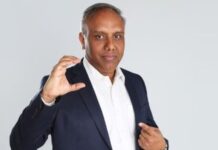
Has it happened to you that there are a few organisations where you instantly felt belonged? The conversations in these organisations, whether it is their mission, goals and purpose connect with you at a deeply intrinsic level. You feel that you could be the best version of yourself in the environment nurtured by such organisations.
Individuals connect to the core values, beliefs, behaviours and artefacts of organisation and its employees. Those who align with the culture of their organisations tend to be more satisfied with their jobs, will stay longer and maybe excel in their environment.
“Culture fit” refers to how closely an individual aligns with the core values and collective behaviours of an organization. What makes for a good culture — and therefore a good culture fit — depends on the organization and its employees. Some might like a competitive environment, while others might prefer to collaborate.
Culture is Only One Aspect of Hiring Decision
When hiring for a culture fit, the aim is to find the one who fits the organization’s specific culture, whatever it might be. But this might lead to organisations hiring only the same kind and might have an impact on diversity of thoughts and experiences.
Another challenge is that organisations might spend a lot of time in analysing a candidate’s values and traits over their critical skills like problem-solving, technical know-how etc.
It’s important to keep in mind that a candidate who shares your values may not necessarily share your goals or methods or competency. Values are just one part of what a person needs to really fit in at an organization.
Employer Value Proposition Needs to be Holistic
Organisations need to work on an employer value proposition which is holistic. It needs to have elements of culture as well as challenging work, compensation, and purpose. When a company communicates its culture to candidates ahead of time, candidates get a better understanding of what would be expected of them. This helps them make more informed decisions about whether a company would be right for them.
At SAP, our EVP states “We build breakthroughs together” which covers the element on work as well the collaborative aspect of working together. Our EVP is what makes SAP unique as an employer. The key message is that we are shaping “Together”.
SAP is a purpose-driven, future-focused company with a highly collaborative team ethic and strong focus on learning & development. It is designed to help us attract the right people to SAP in the knowledge that right people will give their best results. Such EVPs ensure that candidates have full visibility to the culture of our organization.
Hire for Inclusion
Overemphasis on hiring based on the organizational D&I targets like gender and race do not breed healthy culture. Hiring always needs to focus on hiring a diverse group of people in order to bring varying perspectives and opinions to an organization. When we are inclusive, we consider candidates as whole people and look at the new ideas they could bring to a company.
Reduce Bias During Hiring
At SAP, we believe that every candidate defines her/his own success. This starts with landing a job that aligns with the candidate’s skills and interests. We ensure that hiring is done for the skill and competency fit through these measures:
- Skill Matcher is a tool that intelligently matches jobs with the skills and recommends the ones that can best utilize the skill set.
- Job analyzers remove gender-specific adjectives with the Job Analyzer.
- SHL – ATS integrated Integrated assessments for prescreening
- Intelligent Screening via Ideal to screen and prioritize instantly so recruiters know who to prioritize first, masking gender to avoid bias
- Inclusive Interview Framework ensures that all interview panels should be gender balanced and include different generations, identities, and backgrounds to reduce unconscious bias and highlight our inclusive culture to candidates.
Trust your employees to bring the best-fit talent
Many organizations rely on initiatives like Employee Referrals to bring talent. This is a practical route to ensure that employees get talent who they know would fit the performance and culture of the organization. It also helps to reduce recruiting expenses and increase productivity in the long run. Hiring through employee referrals is a wonderful way to proactively protect employee morale.
As Howard Schultz rightly said, “Hiring people is an art, not a science, and resumes can’t tell you whether someone will fit into a company’s culture.” Past performance of talent showcases the value creation in the context of a different organization, values, and ecosystem. When assigned to the different roles, environments and goals of an organization, the performance will vary.
While performance is a testimony of the capability of a candidate, culture fit is future looking. Forward-looking hiring without the pitfalls of bias can only be achieved through systemic changes in interview and assessment processes.
The culture fit approach helps to explore the possibilities and value that talent can bring to an organization.








